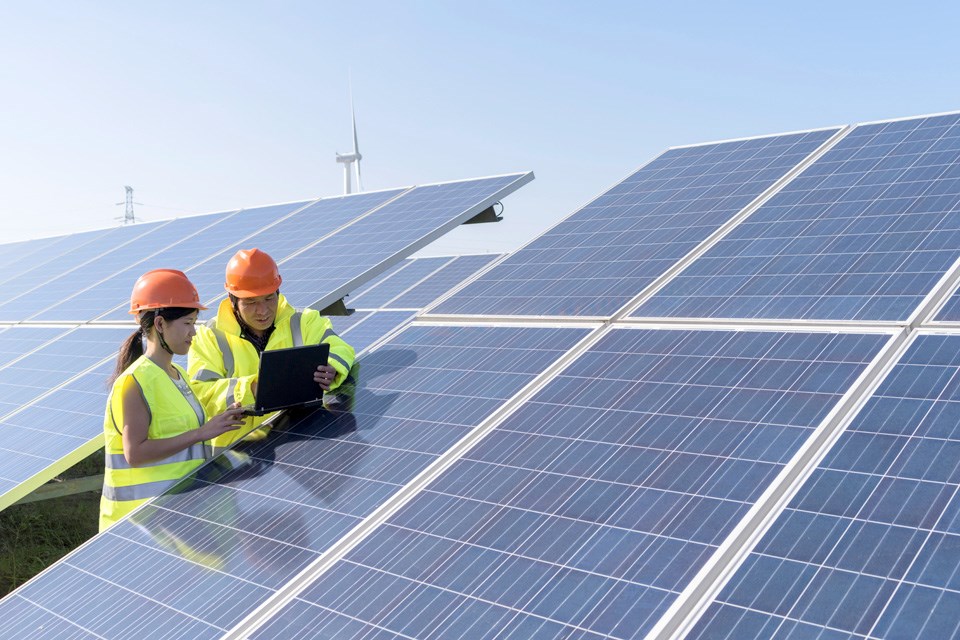St. Albert’s solar programs are powering ahead, but a new report warns Alberta’s broader renewable energy sector is losing investor confidence.
In St. Albert, the city has installed rooftop solar panels on municipal buildings. City of St. Albert municipal energy specialist Gage Tweedy said sustainable energy is a priority for the city to help reduce emissions and costs.
He explained that St. Albert also has the Clean Energy Improvement Program (CEIP), which provides funding for people to install solar in their homes.
"We have had quite a few people install solar PV through that program," said Tweedy.
Despite investor confidence declining in utility-level projects, Alberta is still ahead when it comes to micro-generation.
"Alberta is still ahead whenever you look at micro-generators,” said Heather MacKenzie, executive director of Solar Alberta. “We have over 34,000 systems now in the province, and that growth is continuing."
Municipal programs like St. Albert’s have played a role in supporting that growth.
But a new report, Down But Not Out, by the Pembina Institute, states that two years of policy and regulatory uncertainty starting in 2023 have led to a dampening of large utility-scale projects in the province.
"We knew this was happening for the last two years," said MacKenzie. "You can't report on them immediately, because it's the long term impacts of multiple terrible government decisions."
She explained that the seven-month moratorium on new wind and solar projects, as well as the subsequent policy decisions, have had a significant impact on the sector. One of the policy changes was the creation of buffer zones, areas where new energy developments can not be built.
"If they are going to have any buffer zone, the buffer zones should be inclusive of all forms of development," said MacKenzie. "Why would you say no to a solar farm developer in a segment of the province and then say yes to a McMansion developer? That is a double standard that makes investors uncomfortable.”
She said investors are seeing a non-competitive landscape where housing and natural gas developers are given preferential treatment.
According to the report, between 2020 and 2024, Alberta accounted for 86 per cent of all new wind, solar, and battery storage projects built in Canada. However, 2024 marked the first year that the province's renewable project proposal queue shrank despite growing demand.
Will Noel, a senior analyst with the Pembina Institute, said in a news release that Alberta is falling behind while other governments are taking steps to grow their energy supply and enhance grid efficiency.
"Restoring investor confidence in the renewables sector has to be a priority item for this government, to ensure Albertans aren't left out while Canadians in other provinces experience the benefits of low-cost, abundant, reliable energy to power their lives for years to come," said Noel.
Thomas Barr, a managing partner with Atlas Projects, said that while he agrees investor confidence is down, the moratorium was not a bad idea.
"The reason why we had a moratorium on the renewable energy systems was because we had to create a new protocol," said Barr. He explained that new protocols are necessary to prevent damage to the grid.
Barr said renewable energy should account for approximately 30 per cent of the energy on the grid.
"When you get above that 30 per cent threshold, you risk, or run the risk, of having destabilization on the grid," said Barr.
In an emailed statement, the Alberta Electric System Operator (AESO) said, "At this time, there is no specific number we can attribute to the amount of renewables generation Alberta's grid can accommodate."
According to a report from the AESO, wind, solar and hydro generation provided 19 per cent of Alberta's generation in 2024, up from 16.5 per cent in 2023.
MacKenzie said that because Alberta lacks hydropower, which is more reliable than solar and wind energy, the province will need to build more energy storage and transmission capacity. She says this isn’t an issue yet as renewables don’t make up 30 per cent of the grid.
Barr says instead of focusing on utility-scale projects, people should focus on reducing their impact on the grid. Reducing your impact can be achieved by using renewable energy at home and ensuring your home is energy-efficient.



